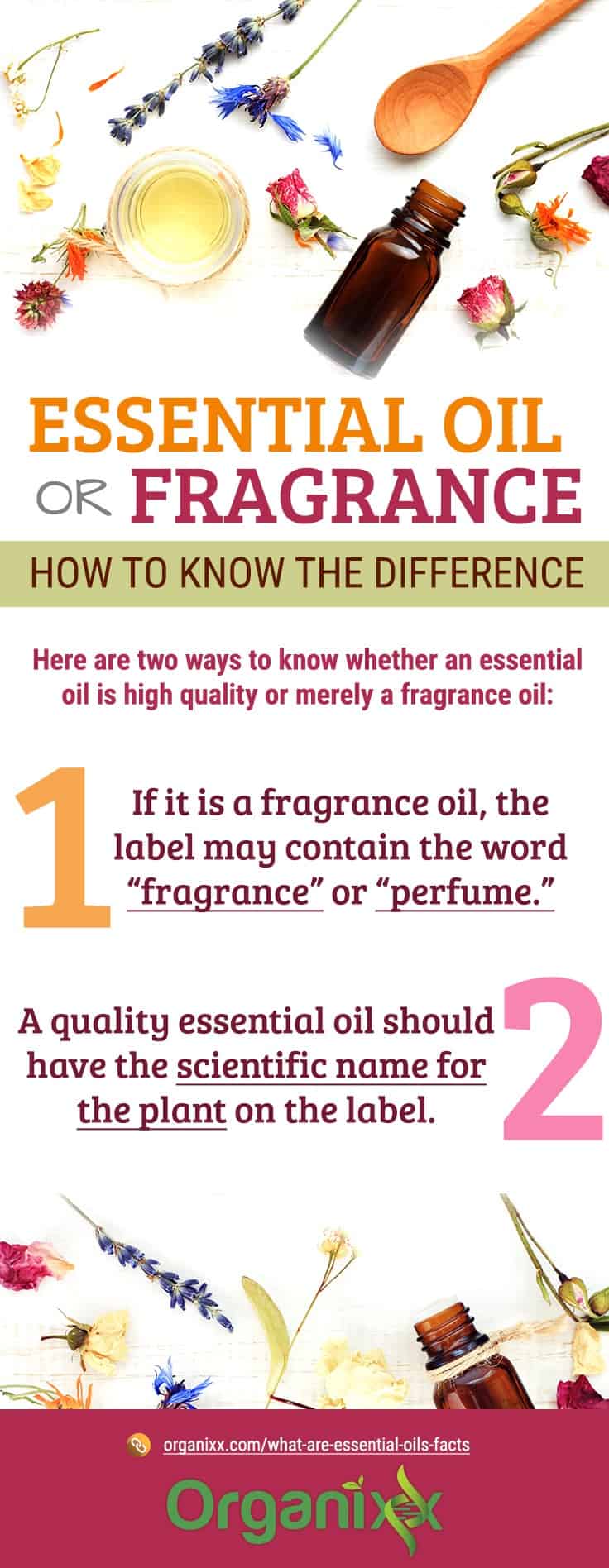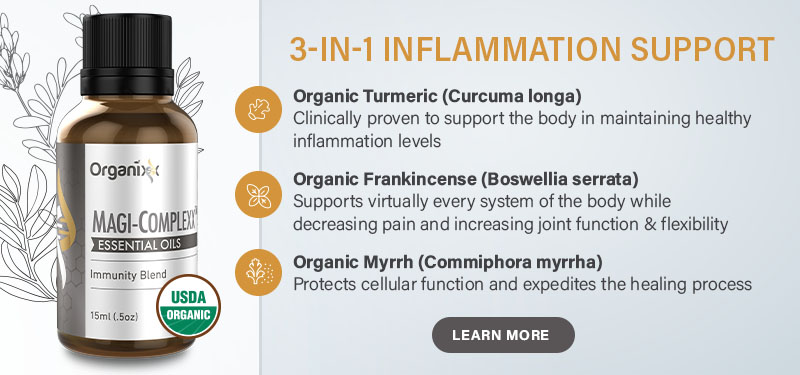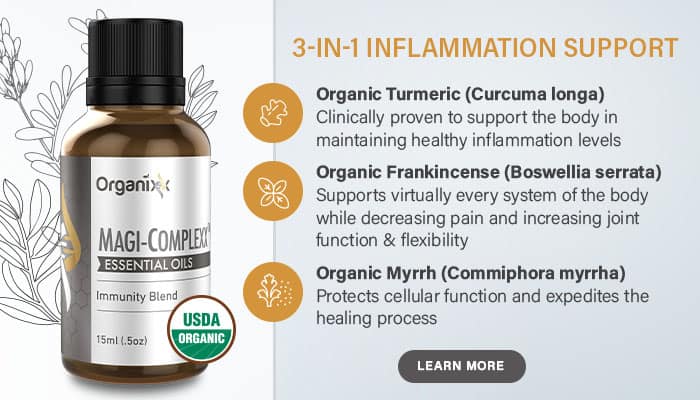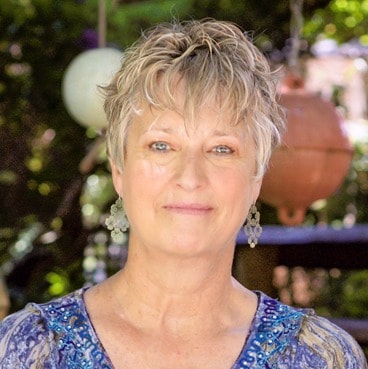What Are Essential Oils? 21 Facts About Essential Oils You May Not Know
In a hurry? Click here to read the Article Summary...
What are essential oils? These extraordinary substances have a few thousand years of historical use for treating everything from an infected wound to the plague. There are 188 references to essential oils in the Bible. Essential oils were even part of the ingredients used by ancient Egyptians in the embalming process for mummification.
Essential oils have been used traditionally in Greek, Roman, and Chinese medicine, although the extraction methods in ancient times certainly differed widely from today’s high-tech distillation processes.
So, just what are essential oils and what is it about them that makes them so attractive and useful beyond just smelling nice?
21 Facts About Essential Oils
Here are 21 interesting facts about essential oils that help to explain what they are and what makes essential oils so beneficial…
- It is estimated that only 10% of the plant kingdom has been assessed for the essential oils they contain. Each year more plants are discovered and identified for the essential oils they contain that may be beneficial for therapeutic purposes. Today over 300 essential oils are distilled or extracted worldwide.
- The term “essential oil” is a misnomer because technically they are not oils at all. They contain highly concentrated plant compounds, but because they contain no fatty acids (which is what makes an oil an oil) they are not actually an oil.
- Essential oils exist in plants to help them be more resistant to disease and insect invasion. These oils are located in the seeds, leaves, stems, bark, roots, fruit, and flowers of the plants. What protects the plant also has a wide range of uses for humans.
- The total essential oil yield of plants is generally quite low; it rarely exceeds one percent. For instance, it takes about 22 pounds (9.9 kg) of rose petals to make just 0.16 oz (5 ml) of rose essential oil.
 Each essential oil is composed of hundreds of different compounds known as phytochemicals – plant-based, naturally occurring chemicals. For example, lavender oil is known to contain approximately 200 phytochemicals!
Each essential oil is composed of hundreds of different compounds known as phytochemicals – plant-based, naturally occurring chemicals. For example, lavender oil is known to contain approximately 200 phytochemicals!- Essential oil phytochemicals fall into 13 types or categories, and each one is responsible for some of the therapeutic action of that oil. The categories include: terpenes, phenols, alcohols, aldehydes, ethers, esters, ketones, carboxylic acids, oxides, lactones, coumarins, alkanes, and furanoids.
- Essential oil molecules are unique in that they have the ability to penetrate cell membranes and diffuse throughout the skin, tissues, and blood. They can travel throughout the body in just minutes, whether applied to the skin or inhaled. They are metabolized by the body just like other nutrients.
- High-quality essential oils do not accumulate in the body over time. They exert their action and they pass on through.
- Essential oils are known as volatile compounds, which means when they are exposed to the air, they are expelled as a gas. This is why you can smell the oil so quickly after taking the cap off a bottle of essential oil. It also means that when applied to the skin “neat” (undiluted) it can evaporate off the skin fairly quickly.
- Essential oils are lipid soluble, meaning they dissolve in fats or oils. But because they are volatile and do not themselves contain fats, they leave no oily residue. If you combine essential oils with a carrier oil, it improves absorption and decreases how rapidly they evaporate from the skin.
- Essential oils contain and carry oxygen molecules. These oxygen molecules help transport nutrients into cells. When a nutritional deficiency exists, there is also a corresponding oxygen deficiency, and this is where disease can begin. Because essential oils carry oxygen, one can begin to see why they can be so useful for supporting a healthy body.
- Besides being oxygen carriers, essential oils may also contain potent antioxidants just as fruits and vegetables do. Antioxidants are known to fight against free radical damage which is linked to cell mutations, cellular oxidation, aging, and a sluggish immune system.
- Essential oils have been studied for their ability to support important bodily functions such as the secretion of neurotransmitters, antibodies, endorphins, hormones, and enzymes.
- Many essential oils have demonstrated potent antimicrobial properties. In vitro testing (done in test tubes) and in vivo testing (in the body) tests an oil’s efficacy against various strains of bacteria. Even bacteria that are known to be resistant to antibiotics, such as MRSA (methicillin-resistant Staphylococcus aureus) have been decimated by certain essential oils. Some of the best oils for this are tea tree oil, lavender, manuka, eucalyptus essential oil, geranium, lemongrass, thyme, and oregano.
- Research indicates that diffusing essential oils can increase oxygen in the room where the diffuser sits. It can also remove metallic particles and toxins from the air, increase ozone and negative ions, inhibit bacteria, eliminate mold, and subdue odors from cigarette smoking and pets.
- Because essential oils cannot be patented, many pharmaceutical drugs have been created by copying the natural phytochemicals found in essential oils. For instance, aspirin was created by scientists studying the nature of the bark of the willow tree. The active constituent in aspirin, salicylic acid, is chemically similar to methyl salicylate, the natural phytochemical in willow bark (also found in birch and wintergreen).
- Humans are a complex combination of body, mind, and spirit. Essential oils can help to support physical, emotional, and spiritual well-being and oils even have the ability to affect all three simultaneously.
- In our modern world one of the most common health problems, experienced by young and old alike, is anxiety. A plethora of recent studies has shown that essential oils can help with anxiety and stress relief, regardless of the reason. The essential oils with the most research showing their anti-anxiety benefits are lavender, frankincense, bergamot, vetiver, orange, lemon, ylang ylang, chamomile, and rose.
- If your olfactory system (sense of smell) isn’t working, essential oils can work on your behalf anyway! Animal studies done with lavender showed that even though the animals (who had an impaired sense of smell) could not smell the lavender oil, its calming effects were still felt. Researchers discovered that olfactory stimulation was not required for the calming effects of lavender to be experienced.
- High-quality essential oils have a long shelf life. Citrus oils, frankincense essential oil, tea tree, pine, and spruce have the shortest shelf life, being one to two years because they tend to oxidize more quickly. Storing them in the refrigerator helps to prolong their shelf life. Most other essential oils will last on the shelf between two to three years. Oils that have a high
 percentage of a compound known as sesquiterpenes tend to last the longest – up to ten years. These include sandalwood, patchouli, myrrh oil, vetiver, and a few others.
percentage of a compound known as sesquiterpenes tend to last the longest – up to ten years. These include sandalwood, patchouli, myrrh oil, vetiver, and a few others. - Store essential oils in dark glass bottles, out of sunlight, with the caps tightly closed, and/or refrigerated to lengthen their shelf life. You can tell if an essential oil has deteriorated if the aroma has changed, it has thickened, or become cloudy.
2 Ways to Tell the Difference Between an Essential Oil and Fragrance Oil
Many people believe that essential oils and fragrance oils are the same things, but this is not the case. Here are two ways that will help you to determine whether an essential oil is high quality or merely a fragrance oil:
- If it is a fragrance oil, the label may contain the word “fragrance” or “perfume.” The term “natural fragrance” might also be used, but don’t be fooled because the word “natural” in this case has no meaning at all. Even the words “essential oil” on the label can be misleading.
- A good quality essential oil should have the scientific name for the plant on the label. For example, Peppermint is Mentha piperita. Some bottles may say 100 percent pure, but this still may not be the case. Look for the word “organic” which indicates the plants were grown without pesticides or herbicides which can lodge within the cells of the plant and cause problems for health. Sometimes essential oil ingredients do not have organic certification but are grown without pesticides or herbicides. Before you buy, find out how that company grows its plants and distills its oils.
It is estimated that at least 77% of essential oils on the market are synthetic. These oils not only have little to no therapeutic value – they can be toxic and dangerous to use. Roughly 21% of essential oils on the market are adulterated with fillers and/or toxic chemicals.
That leaves a tiny two percent of essential oils on the market that are the real thing, meaning the plant ingredients are properly grown and distilled so that their therapeutic phytochemical content is what it should be.
In the United States, essential oils are not regulated or certified which means there are no quality control guidelines in place for essential oils whatsoever. As a smart consumer it is up to you to learn about what you are buying, and the practices of the company that manufactures the oil.
How to Test an Essential Oil for Purity
To test an essential oil for purity here is a quick and easy test you can do. It is not fail-proof but in most cases will give you a good idea about the quality of the oil you are testing. Put a single drop of oil on a piece of white paper and let it dry. If it leaves behind an oil ring, it is most likely not a pure essential oil.
(Note: If the oil you are testing is a blend, it may have a carrier oil with it, so there are exceptions to this guideline. But the label should tell you whether or not a carrier oil is present.) Also, some essential oils are thicker in consistency and have a natural, deeper color that can leave a slight tint behind, but it still should not be oily. Sandalwood, patchouli, and German chamomile fall into this category.
The powerhouse trio of herbs in Magi-Complexx Essential Oil provides the strongest, most synergistic healing effect, helping sufferers of arthritis pain, constant muscle aches and pains, neuropathy, systemic inflammation, slowed wound healing, circulatory challenges, as well as skin irritations like eczema, psoriasis, and acne.

 Sources:
Sources:
Article Summary
Essential oils are extracts from the seeds, leaves, stems, bark, roots, fruit, and flowers of plants. They have been used for thousands of years in Greek, Roman, and Chinese medicine.
Each essential oil is composed of hundreds of different compounds known as phytochemicals – plant-based, naturally occurring chemicals.
The term “essential oil” is a misnomer because technically they are not oils at all.
If you combine essential oils with a carrier oil, it improves absorption and decreases how rapidly they evaporate from the skin.
Essential oils can help to support physical, emotional, and spiritual well-being.
High-quality essential oils have a long shelf life. Store essential oils in dark glass bottles, out of sunlight, with the caps tightly closed.





As an oil pulling oral rinse, neem, clove, tea tree and peppermint are recommended with a carrier oil, e.g. coconut or olive oil. If you're going to swish it in your mouth, should they all be food grade or therapeutic grade, and do you have any other suggestions for this application ???
Hi Sam,
Thank you for your question.
Regarding your question about essential oils, certain oils can be used internally and others cannot. Also, there are certain essential oils suitable for adults that are not healthy for children. In-depth questions about internal dosage should be directed to a qualified nutritionist or trusted health professional. The following essential oils should never be taken internally: anise, fennel, hyssop, pine, cypress, arborvitae, birch, cedarwood, eucalyptus, white fir, tea tree, and wintergreen.
Here is an article we published regarding essential oils and oral health. There is a bonus recipe for a mouthwash using essential oils at the bottom. https://organixx.com/clove-oil-for-toothache/
I hope you find this information helpful.
Have a great day!
It's cool that the same oils that protect plants from disease and insect invasion have a side range of uses for humans. My wife and I have been looking into essential oils for aid in preventing diseases in our home. We'll now be looking further into the benefits and uses of essential oils.
That's wonderful, Thomas! Thank you for sharing with us. Glad to hear you found the article beneficial. If you haven't done so already, we'd love for you to check out some of our USDA Certified Organic Essential oils here: https://shop.organixx.com/#essential-oils. Wishing you all the best!
Can you tell me if there is a name for a person who mixes essential oils? Like mixologist for alcohol, herbalist for plants, alchemist for metal...
Hi Francine, thanks for your interesting question. According to our research, there are two careers that are related to mixing essential oils. There's an aromachologist and an aromatherapist. The former practices aromachology, which is a method of using smells or essential oils to create, either in isolation or through blending in formulations. The latter practices aromatherapy, a treatment that uses essential oils to promote physical and emotional well-being. Hope this helps!
Yes, I'm interested in trying Frankincense Essential Oil and I guesss there is a Magi- Complex EO. as well. If you take any essential oils or want to internally- I'm sure they need to be very very diluted. Can you tell me ratio and mixed with what? Also I just purchased the EO - orange to flavor my spring water, I don't like the taste of water by itself and am so sensitive to preservatives and chemicals . Thanks for any help!!???
Cucumbers work well for flavoring water. Just put organic cucumber slices in a glass, add water. Then refrigerate for a few hours or overnight. Tastes great - refreshing, and also adds nutrients and minerals to your water.
How many drops & times per day in mouth to treat illness using Magi Complexx EO Blended?